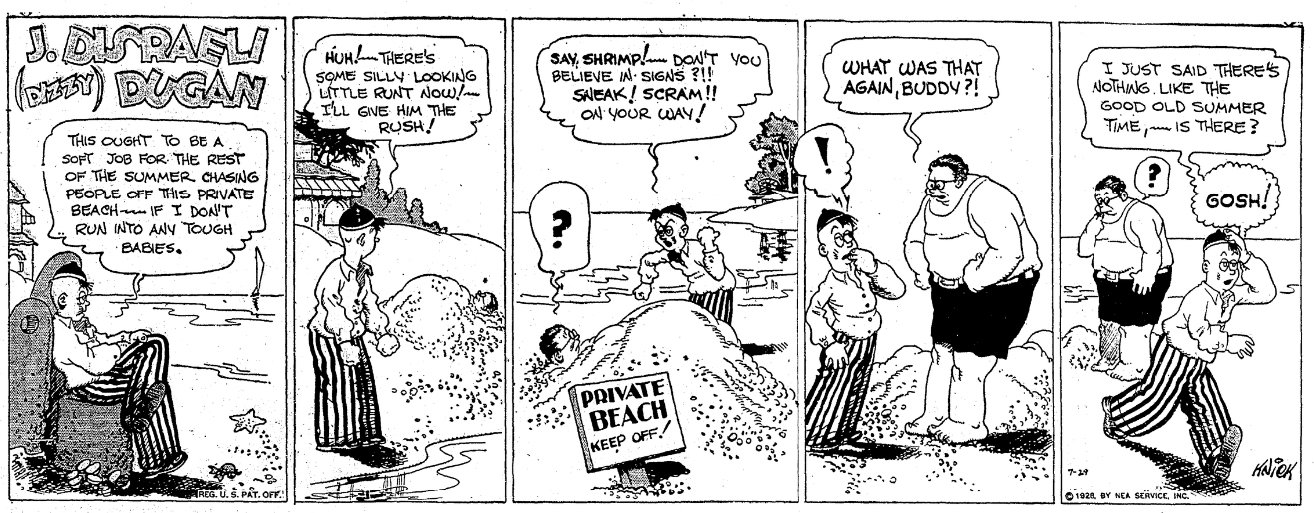6 September 2022
Tit for tat is a reciprocal retaliation, a response equal in severity to the original injury. Both tit and tat literally refer to light blows or strokes. So, tit for tat is literally an equal exchange of blows. The terms and their association with one another date to the mid fifteenth century, and the idiom, in its familiar form of tit for tat, comes along a century later.
Tit originally appears as tip in a poem by Charles, Duke of Orleans. Charles was captured at the battle of Agincourt in 1415 and held as a prisoner in England for twenty-five years, during which time he wrote hundreds of poems, in both French and English. During the course of his imprisonment, he became quite skilled and fluent in English. (Like many high-ranking noble prisoners, his imprisonment was in relative luxury, and he was allowed a fair degree of movement and socializing with English nobles, but as the head of a political faction in France and one in line for the French throne, he was considered too dangerous to ransom back to France.) The poem, recorded c.1450, and bearing the modern title of “The Beginner,” is rather misogynistic and classist:
The marchaunt wijf/nay þe doughter of burgeys
With giftis grete to fresshe them in a-ray
So maist thou when ther fauoure best y gesse
But what a cherlis doughtir dawbid in clay
As strokis grete not tippe. nor tapp/do way
But loke who that most fowlist kan bigynne
The rewdisshe child so best lo shalle he wynne(You may greet the merchant’s wife, undoubtedly the daughter of a burger, by surprising her with gifts of adornment when you correctly guess her disposition toward you, but what moves a churl’s daughter, daubed in clay, are great strokes, not tip, nor tap, but look to who the most foulest can best deceive the uncouth child, and lo shall he win.)
While Charles does not use the construction tip for tat, his wording hints that the idiom may have been in use this early, although we cannot say that for certain.
The idiom, however, is definitely in place a century later, with tit substituting for tat, reduplicating the consonant. Poet John Heywood uses it in a 1546 humorous dialogue containing many such phrases:
Mark ye, how she hitteth me on the thu[m]bs (quoth he)
And ye taunt me tyt ouer thumb (quoth she)
Sens tyt for tat (quoth I) on euen hand is set,
Set the hares head agaynst the goose ieblet.(Mark you, how she hits me on the thumbs, said he
And you reproach me for a tit on the thumb, said she
Tit for tat means, said I, on equal terms,
Set the hare’s head against the goose’s giblet.)
The modern translation does not do justice to the word play in the passage. Sens can mean both the sensation of touch, in this case physical pain, as well as meaning. And Heywood’s use of euen hand relates to the thumbs as well as the reciprocal nature of tit for tat.
It appears in another poem by Heywood published in 1560, this one an epigram about a thief who has been hanged:
Of one hanged. 43.
What faute had he done that was hangde yesterday?
Of any faute done by him I can nought say.
Two or three two peny tryfles were layd to hym,
But, his fayre gay hangde house, man, did vndo hym.
Here is tyt for tat measure met very trym:
First he ha[n]gd his house, now his house hath hangd hym.
Like his earlier poem, the word play is opaque to the modern reader. Hanged, in sixteenth-century English, could mean adorned or decorated as well as a means of execution. The thief, in this case, had been discovered by spending too lavishly after his theft.
Sources:
Charles d’Orleans. “The Beginner,” The English Poems of Charles of Orleans, vol. 1 of 2. Robert Steele, ed. Early English Text Society, O.S. 215. London: Oxford UP, 1941, lines 147–53, 6. ProQuest. London, British Library, Harley MS 682.
Heywood, John. A Dialogue Conteinyng the Nomber in Effect of All the Prouerbes in the Englishe Tongue Compacte in a Matter Concernyng Two Maner of Mariages. London: Thomas Berthelet, 1546, G4r. Early English Books Online (EEBO).
———. A Fourth Hundred of Epygrams, Newly Inuented and Made by John Heywood. London: Thomas Berthelet, 1560, sig. B2r. Early English Books Online (EEBO).
Middle English Dictionary, 2019, s.v. tippe, n.(2).
Oxford English Dictionary, third edition, January 2018, s.v. tit for tat, n., adv, and adj., tit, n.3; second edition, 1989, s.v. tip, n.2.
Image credit: Louis Dalrymple, 1895. Library of Congress. Public domain image.






